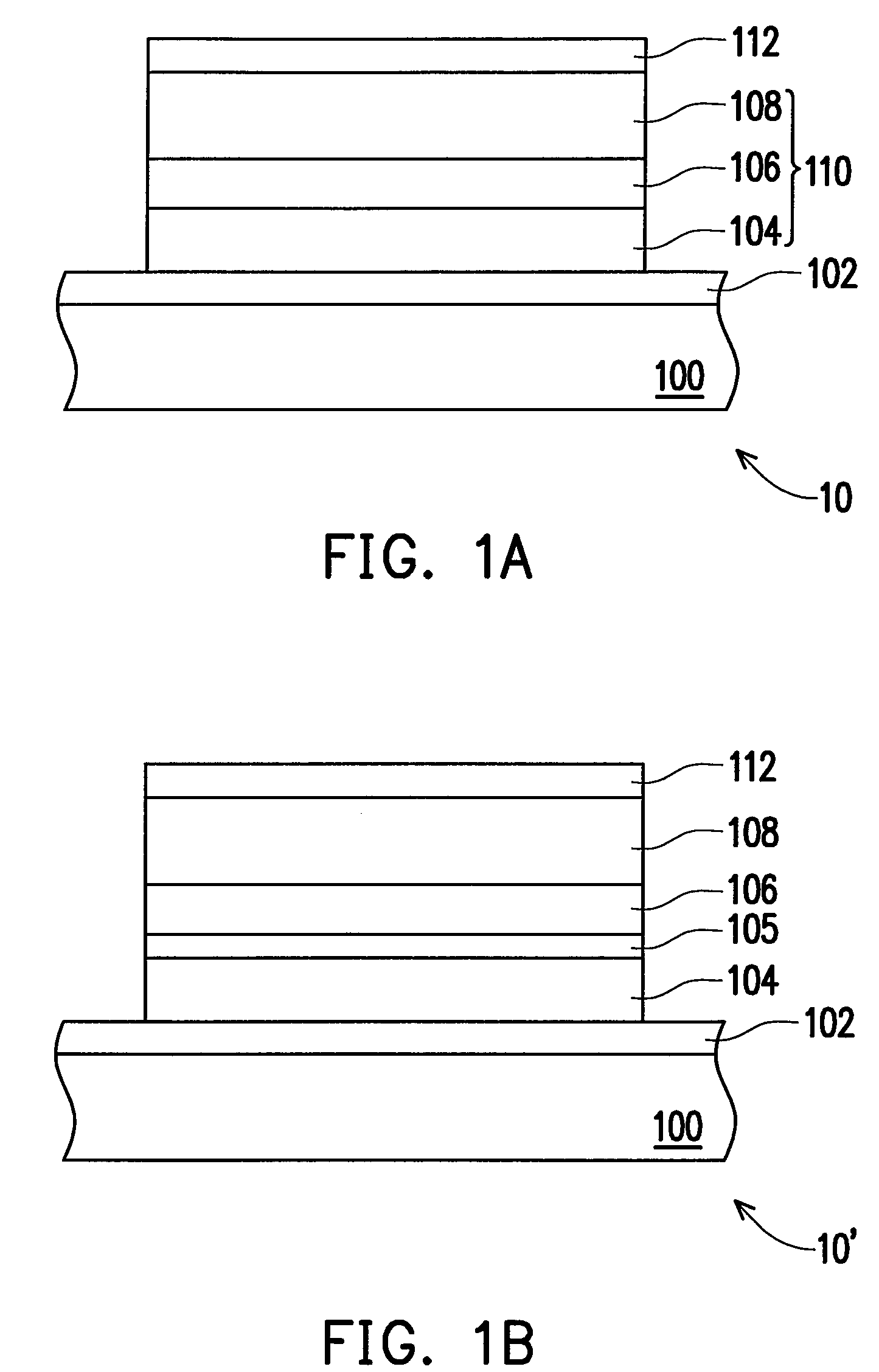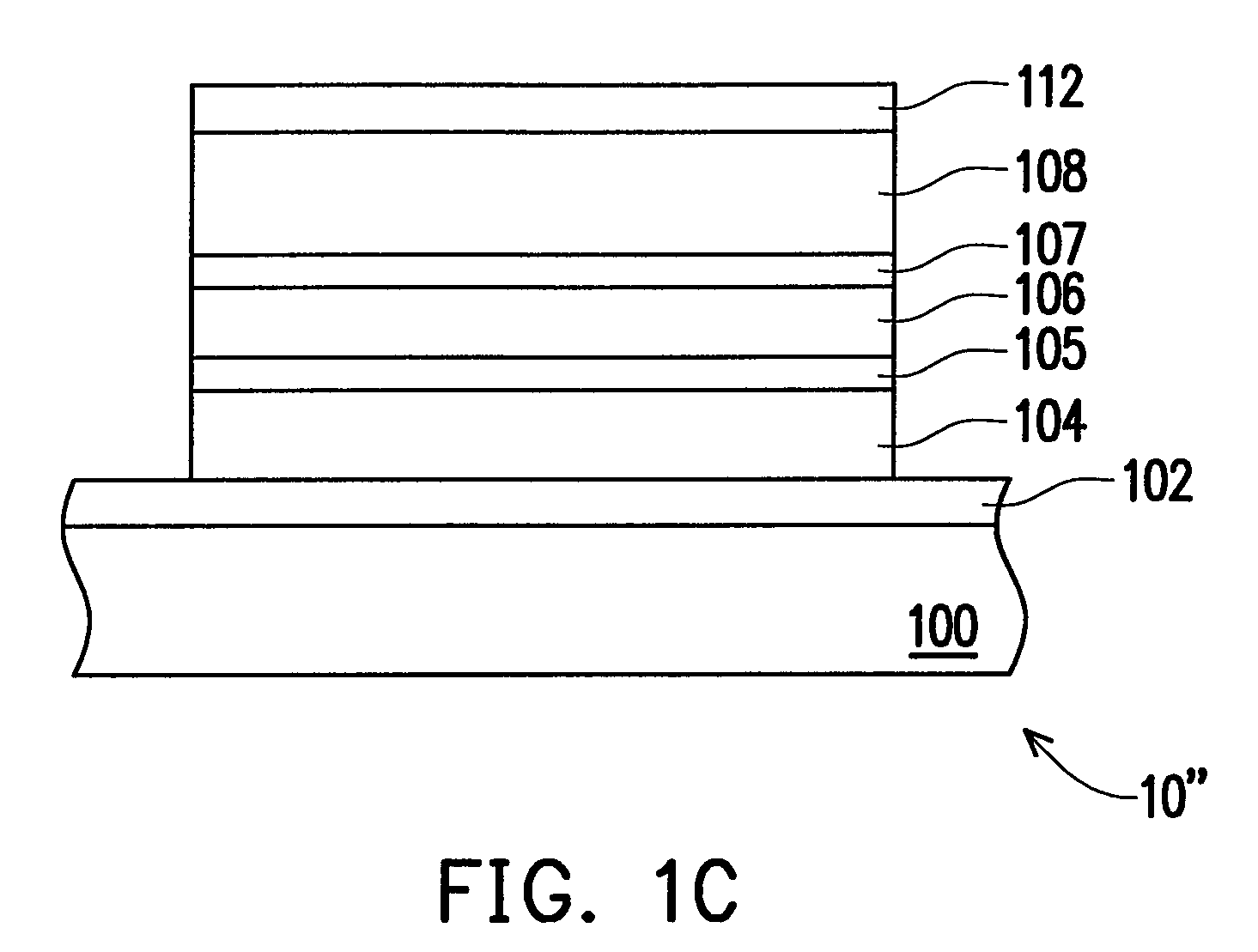Solar cell containing silicon and chalcopyrite semiconductor layers
a technology of chalcopyrite and silicon, applied in the field of solar cells, can solve the problems of increased solar cell production cost, disadvantageous silicon semiconductor layer, poor light-absorbing efficiency, etc., and achieve the effect of enhancing light-absorbing efficiency
- Summary
- Abstract
- Description
- Claims
- Application Information
AI Technical Summary
Benefits of technology
Problems solved by technology
Method used
Image
Examples
Embodiment Construction
[0037]FIG. 1A illustrates a cross-sectional view of a solar cell according to an embodiment of the present invention.
[0038]Referring to FIG. 1A, a solar cell 10 is disposed on a substrate 100. The solar cell 10 comprises an electrode 102, an electrode 112, and a stacked semiconductor layer 110. A material of the substrate 100 is, for example, glass. The electrode 112 is disposed on the substrate 100. A material of the electrode 112 is, for example, aluminum, silver or other alloys. A thickness of the electrode 112 is, for example, between 10 Å and 5000 Å. The electrode 102 is disposed between the substrate 100 and the electrode 112. A material of the electrode 102 is, for example, aluminum doped zinc oxide (AZO), gallium doped zinc oxide (GZO), SnO2, or transparent conductive oxide (TCO). A thickness of the electrode 102 is, for example, between 50 Å and 300 Å. The stacked semiconductor layer 110 is disposed between the electrodes 102 and 112. The stacked semiconductor layer 110 com...
PUM
 Login to View More
Login to View More Abstract
Description
Claims
Application Information
 Login to View More
Login to View More - R&D
- Intellectual Property
- Life Sciences
- Materials
- Tech Scout
- Unparalleled Data Quality
- Higher Quality Content
- 60% Fewer Hallucinations
Browse by: Latest US Patents, China's latest patents, Technical Efficacy Thesaurus, Application Domain, Technology Topic, Popular Technical Reports.
© 2025 PatSnap. All rights reserved.Legal|Privacy policy|Modern Slavery Act Transparency Statement|Sitemap|About US| Contact US: help@patsnap.com



